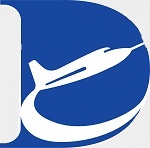Hobby Master HA4503 NASA Boeing F-15D Eagle Multi-Role Fighter - Dryden Flight Research Center,Edwards AFB, CA, 2011 (1:72 Scale)
"We did both pitch (up-and-down) and yaw (side-to-side) vectoring at more than Mach 1.95, and to our knowledge, that's the first time in history that it's been done," he added. "That's given us the ability to do thrust vectoring anywhere in the (flight) envelope of this aircraft."
- Don Gatlin, Project Manager of the F-15 Advanced Control Technology for Integrated Vehicles (ACTIVE) program at NASA's Dryden Flight Research Center
 The McDonnell Douglas (now Boeing) F-15E Strike Eagle is an all-weather multirole fighter, derived from the McDonnell Douglas F-15 Eagle. The F-15E was designed in the 1980s for long-range, high speed interdiction without relying on escort or electronic warfare aircraft. United States Air Force (USAF) F-15E Strike Eagles can be distinguished from other U.S. Eagle variants by darker camouflage and conformal fuel tanks mounted along the engine intakes.
The McDonnell Douglas (now Boeing) F-15E Strike Eagle is an all-weather multirole fighter, derived from the McDonnell Douglas F-15 Eagle. The F-15E was designed in the 1980s for long-range, high speed interdiction without relying on escort or electronic warfare aircraft. United States Air Force (USAF) F-15E Strike Eagles can be distinguished from other U.S. Eagle variants by darker camouflage and conformal fuel tanks mounted along the engine intakes.
The Strike Eagle has been deployed in Operation Desert Storm, Operation Allied Force, Operation Enduring Freedom, and Operation Odyssey Dawn carrying out deep strikes against high-value targets, combat air patrols, and providing close air support for coalition troops. It has also seen action in later conflicts and has been exported to several countries.
The F-15E will be upgraded with the Raytheon APG-82 Active Electronically Scanned Array (AESA) radar after 2007, and the first test radar was delivered to Boeing in 2010. It combines the processor of the APG-79 used on the F/A-18E/F Super Hornet with the antenna of the APG-63(V)3 AESA being fitted on the F-15C. The new radar upgrade is to be part of the F-15E Radar Modernization Program. The new radar was named APG-63(V)4 until it received the APG-82 designation in 2009. The RMP also includes a wideband radome (to allow the AESA to operate on more radar frequencies), and improvements to the environment control and electronic warfare systems.
While some of the F-15C/Ds have been replaced by the F-22 Raptor, there is no slated replacement for the F-15E in its primary "deep strike" mission profile. The Strike Eagle is a more recent variant of the F-15, and has a sturdier airframe rated for twice the lifetime of earlier variants. The F-15Es are expected to remain in service past 2025. The USAF has pursued the Next-Generation Bomber, a medium bomber concept which could take over the Strike Eagle's "deep strike" profile. The F-35A Lightning II is projected to eventually replace many other attack aircraft such as the F-16 Fighting Falcon and A-10 Thunderbolt II, and may also take over much of the F-15E's role; however, the F-15E has better combat range under payload.
Pictured here is a stunning 1:72 scale diecast replica of a F-15D Strike Eagle that was employed by NASA during 2011.
Sold Out!
Dimensions:
Wingspan: 7-inches
Length: 10-1/2-inches
Release Date: January 2015
 Historical Account: "ACTIVE F-15" - A significant milestone in advancing the capabilities of high-performance aircraft was achieved recently at the Dryden Flight Research Center, Edwards, Calif., when a highly-modified F-15 aircraft employed thrust-vectoring of its engine exhausts at speeds of almost Mach 2.
Historical Account: "ACTIVE F-15" - A significant milestone in advancing the capabilities of high-performance aircraft was achieved recently at the Dryden Flight Research Center, Edwards, Calif., when a highly-modified F-15 aircraft employed thrust-vectoring of its engine exhausts at speeds of almost Mach 2.
Don Gatlin, Project Manager of the F-15 Advanced Control Technology for Integrated Vehicles (ACTIVE) program at Dryden, said the four flights Oct. 31 and Nov. 1 marked the first time that vectoring--or deflecting--of engine thrust had been accomplished at such speeds. The tests were carried out in restricted airspace at an altitude of about 45,000 feet.
"We did both pitch (up-and-down) and yaw (side-to-side) vectoring at more than Mach 1.95, and to our knowledge, that's the first time in history that it's been done," he added. "That's given us the ability to do thrust vectoring anywhere in the (flight) envelope of this aircraft."
The F-15 being flown in the ACTIVE research program is a highly-modified two-seat "B" model of the Air Force tactical fighter. It employs a digital flight control system, active canards mounted ahead of the wings and prototype Pitch-Yaw Balance Beam Nozzles (PYBBN) developed by engine manufacturer Pratt and Whitney which are mounted on the aircraft's F100-PW-229 engines.
ACTIVE is a joint program between Dryden, the Air Force Flight Dynamics Laboratory, Pratt and Whitney and the McDonnell Aircraft division of McDonnell-Douglas Aerospace. It seeks to improve performance of both commercial and military aircraft by integrating a variety of advanced propulsion, aerodynamic and control system technologies.
"The intent is to look at not only performance and maneuvering benefits, but to look at safety improvements," said ACTIVE Chief Engineer Gerard Schkolnik. "These are things which hadn't really been addressed by previous thrust-vectoring programs such as the X-31, the F-18 High-Angle-of-Attack Vehicle (HARV) or the F-16 multi-axis thrust-vectoring programs."
Although significant improvements in maneuvering capability due to thrust vectoring were demonstrated in those programs, speeds were limited to about Mach 1.2, or slightly above the speed of sound, Schkolnik noted. The current program is designed to explore the technology across the entire flight regime of the F-15, which is capable of speeds in excess of Mach 2 for short periods.
Dryden Research Pilot Jim Smolka, who flew two of the four milestone flights in the ACTIVE F-15, pointed out that thrust-vectoring technology has applications for commercial as well as military aircraft.
"...In the commercial arena, (it) will improve the cruise performance of future supersonic transports by reducing the aerodynamic drag on the airplane (and) allowing the engines to pick up some of the control," he said. "In the tactical arena, we're hoping that aircraft will be able to sustain higher load factors and better maneuverability due to thrust-vectoring capabilities," Smolka added.
Gatlin noted that thrust-vectoring nozzles also have the potential for reducing noise at takeoff and landing, a critical design consideration in development of next-generation supersonic airliners.
The thrust-vectoring nozzles are capable of swiveling up to 20 degrees in any direction. The aircraft's engine mounts as well as the engine cases themselves were modified to withstand the higher dynamic forces resulting from thrust vectoring. The nozzles were designed by Pratt and Whitney to be adaptable to current or future aircraft employing the same engine with only minor changes.
The ACTIVE F-15 engines produce about 29,000 lbs. of thrust each at full power. With a maximum takeoff weight of 47,000 lbs., the research aircraft has a thrust-to-weight ratio greater than one to one. The aircraft is 64 feet long, excluding its flight-test nose probe, and has a wingspan of about 43 feet.


